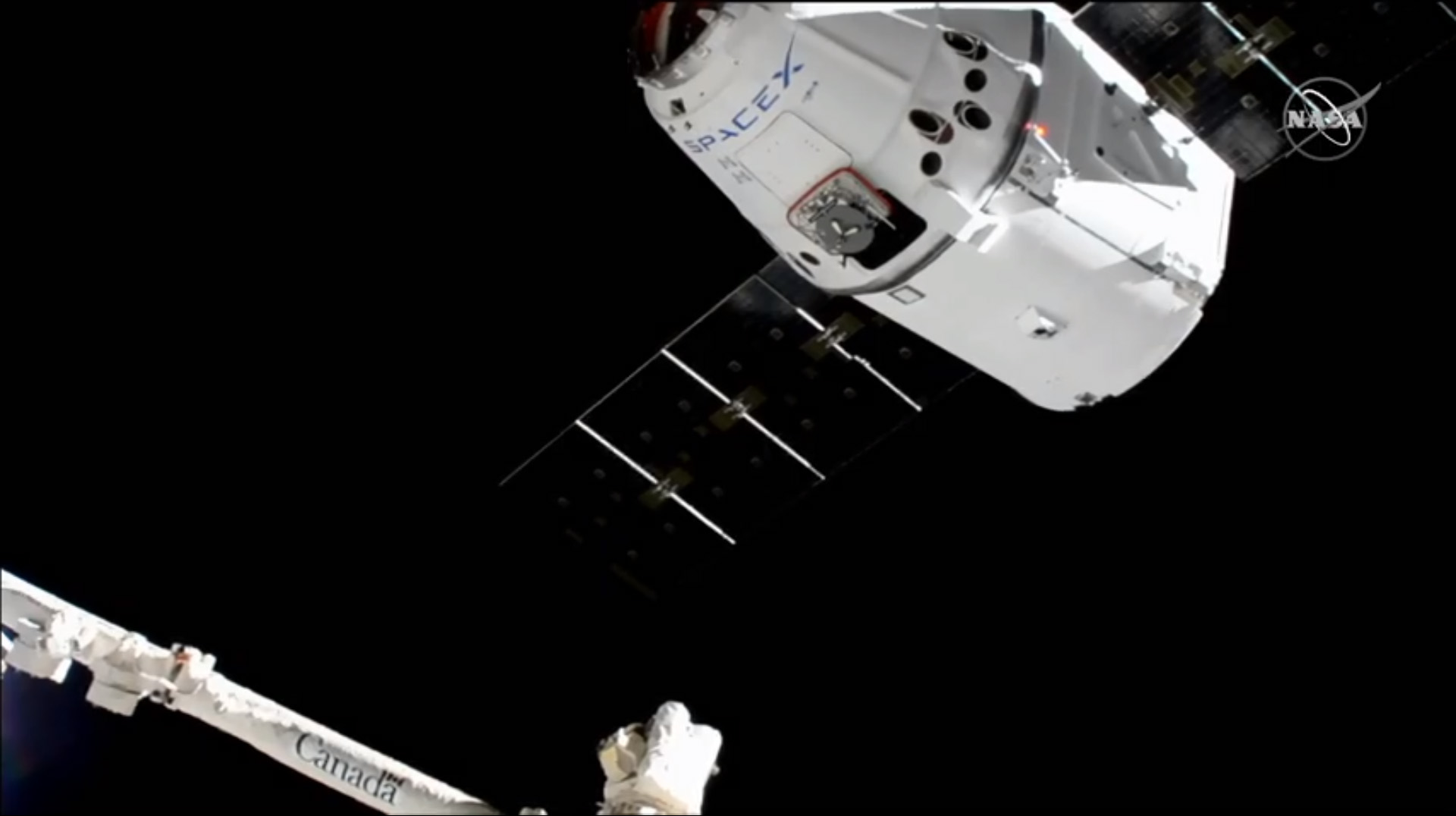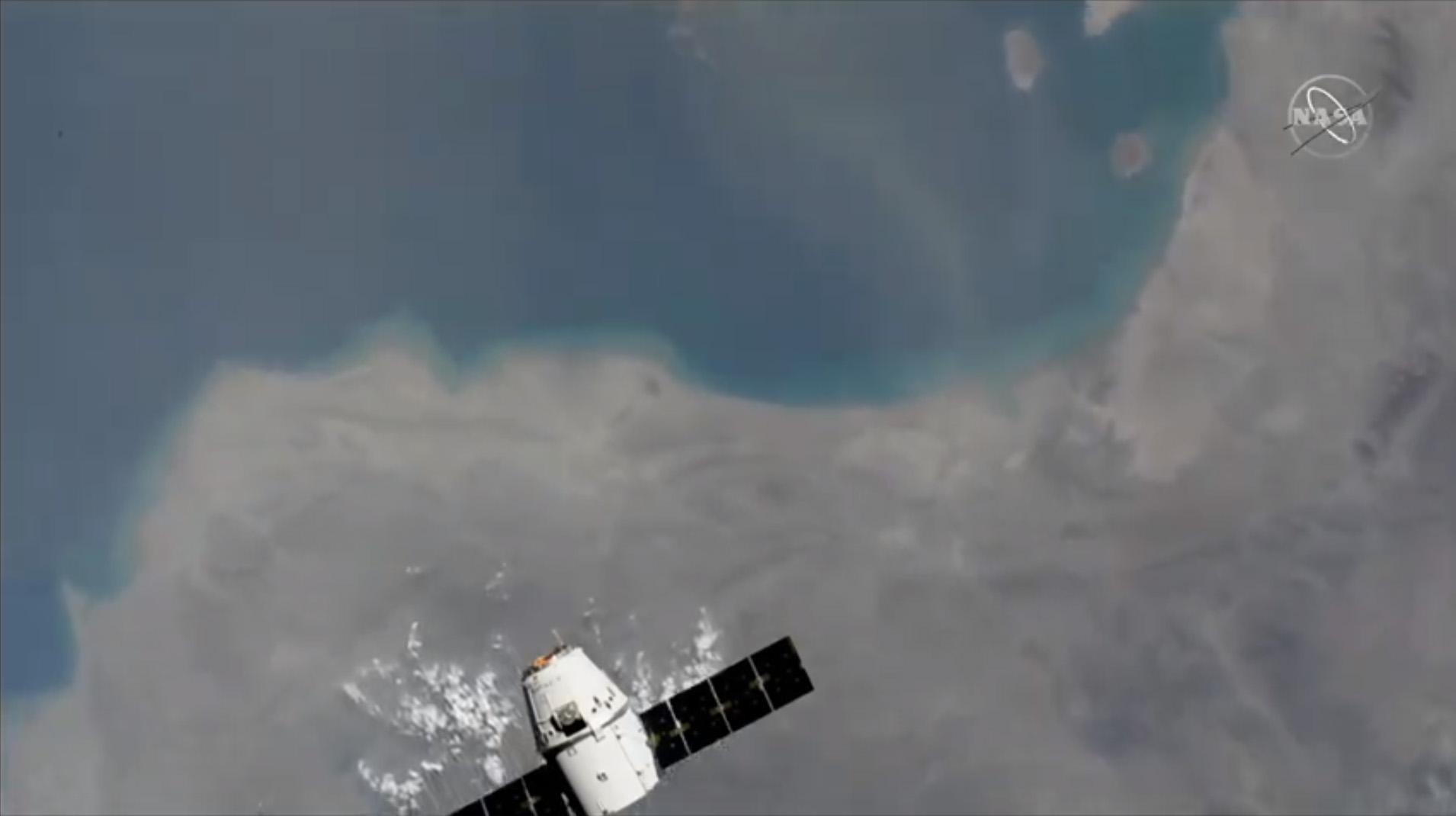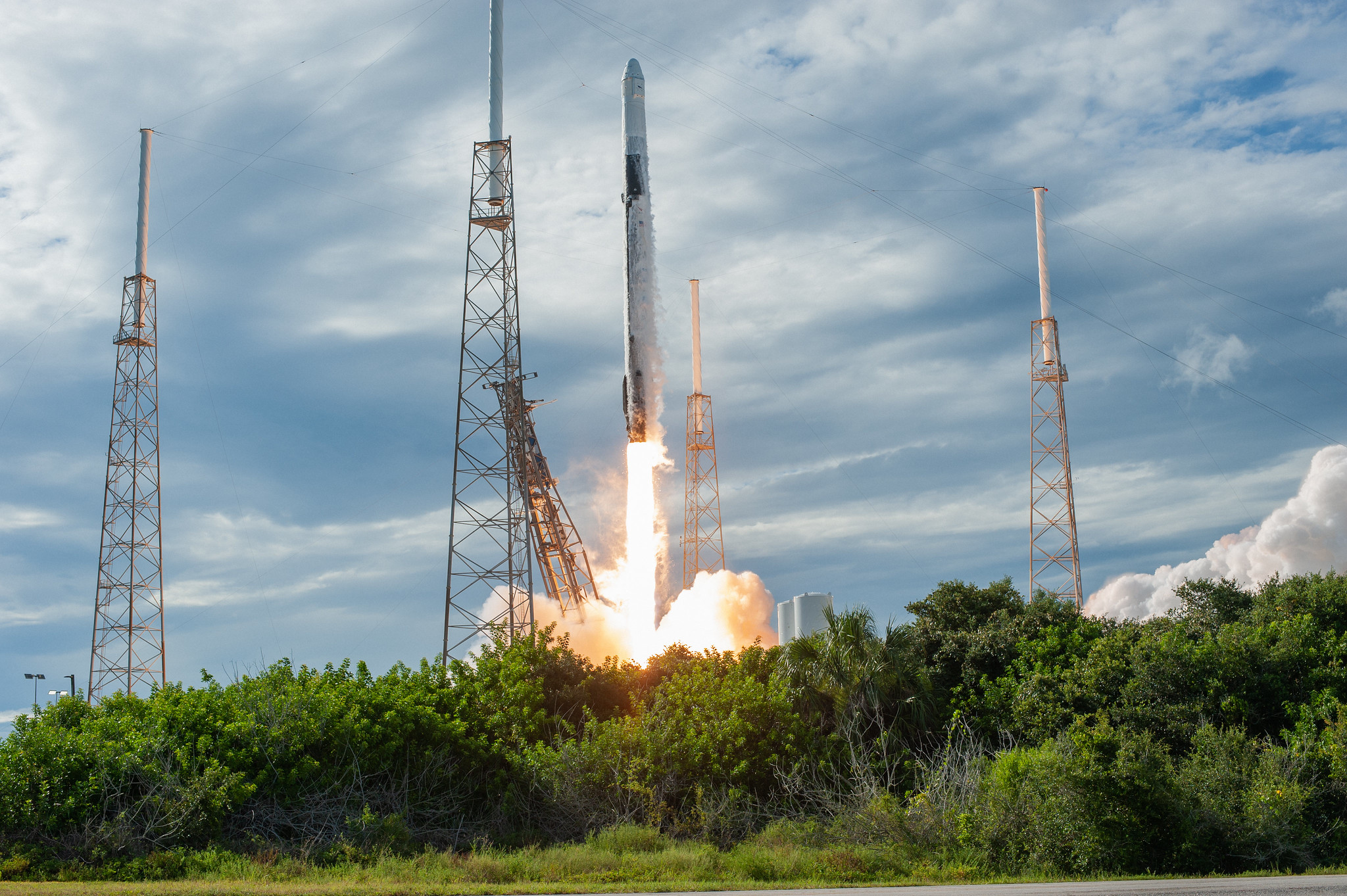SpaceX's robotic Dragon cargo capsule arrived at the International Space Station today (July 27), ending a two-day orbital chase and setting a new record for SpaceX's reusable spacecraft.
The Dragon, which launched Thursday (July 25) from Florida's Cape Canaveral Air Force Station atop a two-stage Falcon 9 rocket, was captured by the space station's huge robotic arm at 9:11 a.m. EDT (1311 GMT) as both spacecraft sailed 267 miles (430 kilometers) above the coast of southern Chile in South America.
"We want to congratulate the team spread across the globe that makes delivering a vehicle like this. It's pretty looking at it out the window," astronaut Nick Hague radioed to NASA's Mission Control in Houston after capturing Dragon with the station's robotic arm. "It's full of science and cargo and things to keep us busy. So, the mission continues."
Related: How SpaceX's Dragon Space Capsule Works (Infographic)




SpaceX's most-flown Dragon
This is the record third cargo delivery mission to the International Space Station (ISS) for this particular Dragon, which also ferried cargo to the station in April 2015 and December 2017. The Falcon 9 was preflown as well; the rocket's first stage had one mission under its belt before Thursday's launch.
Such reuse is key to SpaceX's quest to slash the cost of spaceflight, thereby making ambitious exploration feats such as Mars colonization achievable.
Dragon is carrying more than 5,000 lbs. (2,268 kilograms) of supplies and equipment up to the ISS on this trip, including 2,500 lbs. (1,135 kg) of science gear that will enable dozens of experiments aboard the orbiting lab.
Later today, flight controllers on Earth will attach Dragon to an open berthing port on the space station by remotely controlling the outpost's robotic arm. Astronauts will then be able to open the spacecraft and begin unloading its bounty.
Get the Space.com Newsletter
Breaking space news, the latest updates on rocket launches, skywatching events and more!
Big science aboard
One of those experiments will study how microbes interact with rocks in a low-gravity environment, possibly paving the way for space "biomining" down the road. Another will attempt to fabricate human tissue using a 3D printer, and another will gauge how microgravity affects the processes of healing and tissue regeneration.
Yet another experiment will use Nickelodeon's famous green slime to study the behavior of fluids in microgravity. ISS crewmembers will also play "slime pong" and do other fun things with the stuff, and film the activities for our viewing pleasure down here on Earth.
Dragon also toted up another International Docking Adapter (IDA), which is designed to allow a variety of spacecraft to link up with the ISS. Such visitors will include the crew version of Dragon and Boeing's CST-100 Starliner capsule, both of which are scheduled to start carrying astronauts in the next year or so.
The ISS already has one IDA, which a different Dragon brought up in 2016.
Dragon is scheduled to remain attached to the ISS for about a month, NASA officials said. It will then return to Earth for a Pacific Ocean splashdown, bearing a variety of science samples for researchers to study.
The current cargo mission is the 18th that SpaceX has flown under a contract with NASA.
- International Space Station: Facts, History & Tracking
- SpaceX's Amazing Dragon CRS-17 NASA Cargo Launch (and Landing!) in Photos
- SpaceX: First Private Flights to Space Station
Mike Wall's book about the search for alien life, "Out There" (Grand Central Publishing, 2018; illustrated by Karl Tate), is out now. Follow him on Twitter @michaeldwall. Follow us on Twitter @Spacedotcom or Facebook.
Join our Space Forums to keep talking space on the latest missions, night sky and more! And if you have a news tip, correction or comment, let us know at: community@space.com.

Michael Wall is a Senior Space Writer with Space.com and joined the team in 2010. He primarily covers exoplanets, spaceflight and military space, but has been known to dabble in the space art beat. His book about the search for alien life, "Out There," was published on Nov. 13, 2018. Before becoming a science writer, Michael worked as a herpetologist and wildlife biologist. He has a Ph.D. in evolutionary biology from the University of Sydney, Australia, a bachelor's degree from the University of Arizona, and a graduate certificate in science writing from the University of California, Santa Cruz. To find out what his latest project is, you can follow Michael on Twitter.









